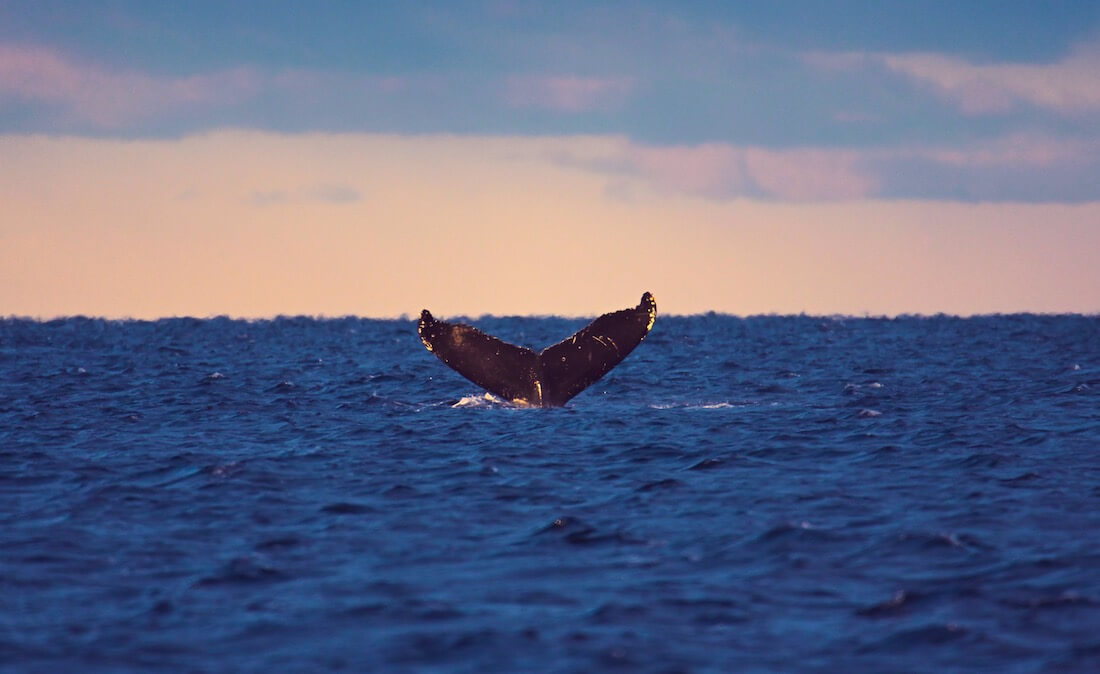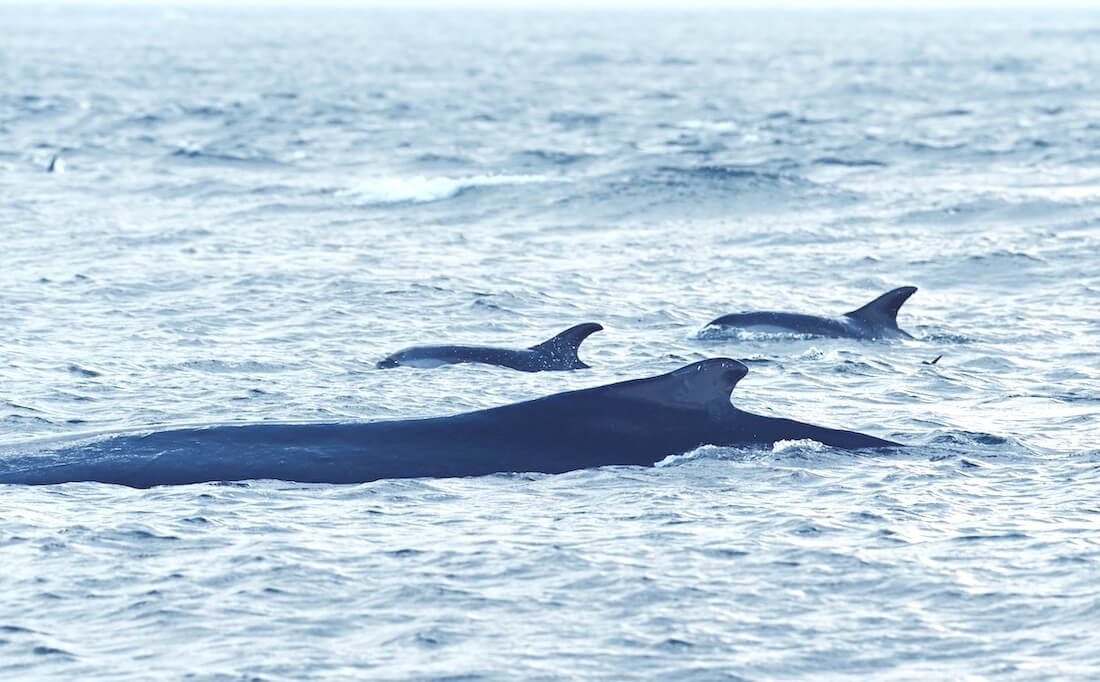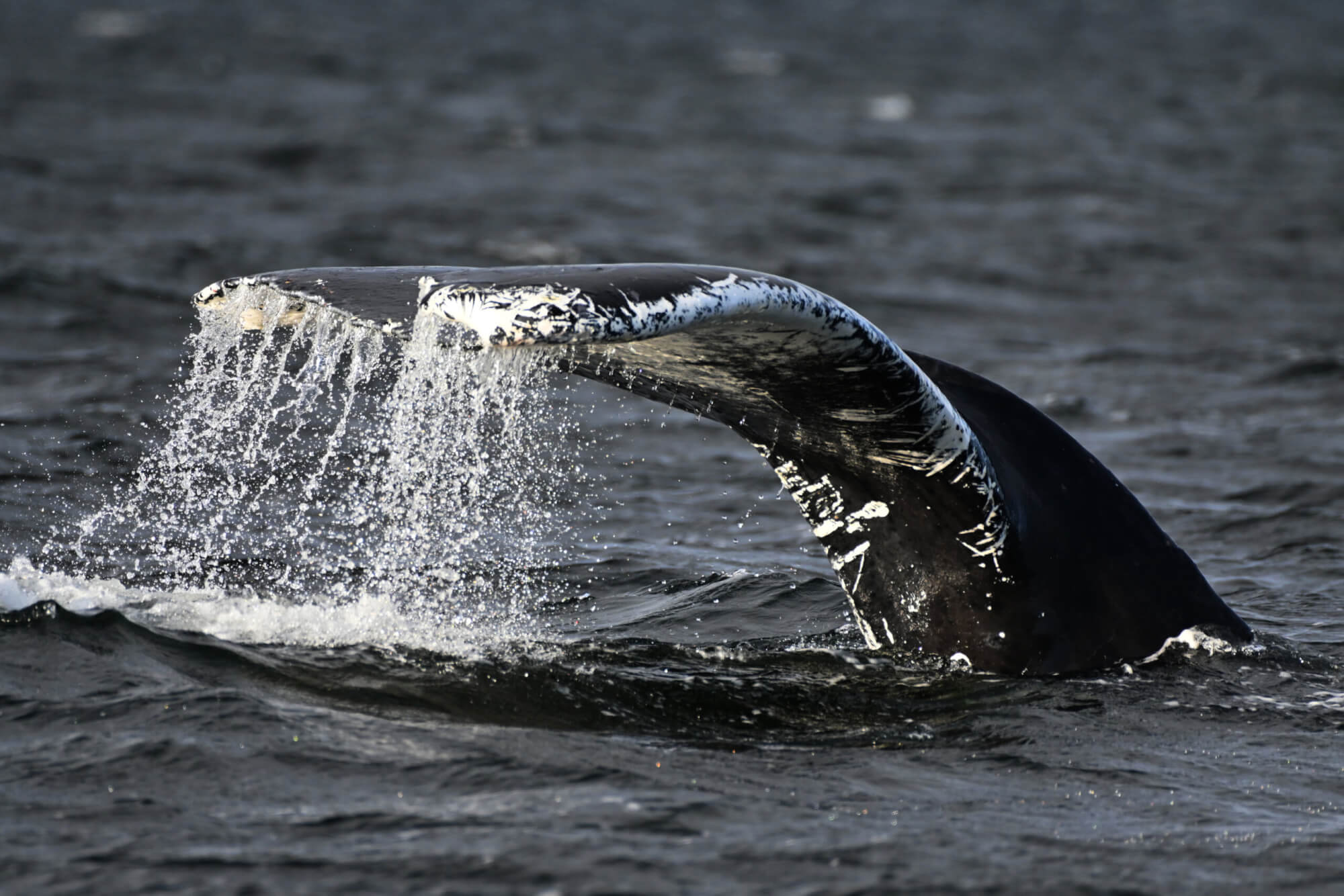Notable sightings of the week included reports of little make-believe characters, from Nemo to the Little Mermaid to SpongeBob, parading through the streets to collect their sweet loot. Meanwhile, in the waters of the St. Lawrence, it’s humpback, fin whales and even Atlantic white-sided dolphins that are filling their bellies.
There are still so many marine mammals in the Saguenay-St. Lawrence Marine Park that the region’s tourism community decided to extend its activities, notably the Marine Mammal Interpretation Centre, which is now scheduled to remain open until November 5! A golden opportunity to meander amongst the majestic skeletons of the museum and fill your imagination with exciting stories about whales before the colder weather sets in.
A colourful day on the water
Observers plying the waters around the Mingan Islands had a great day in the company of marine wildlife. The day gets off to a good start: “First one splash, then another… It’s a tuna! That’s a first for us! No doubt about it, we saw its body clear as day. It lept high out of the water several times. It was energetic and fast; it seemed to be foraging. Park employees told us they had seen schools of mackerel in recent days… Perhaps that was what the tuna was after…” they exclaim. During their visit to an island, their focus shifts to seabirds. On the way back, they come across some harbour seals before they begin to spot cetaceans. They get excited again: “In the same area where we saw the tuna, we encountered four porpoises that circled back toward us and surfaced right next to the boat. We could see them through the clear water, moving quickly alongside the craft. They, too, seemed to be on the prowl.”
Diversity at its peak
The tally of marine visitors is growing for the sector, which is still rich in noteworthy sightings: around ten humpbacks, two fin whales, minke whales, harbour porpoises, seals… But let’s not forget the belugas or white-sided dolphins zipping through the waves by the hundreds! The latter have certainly left their mark this autumn: “[…] presence of more than 500 individuals, between Tadoussac and Les Bergeronnes, reports one naturalist. Occasional leaps high in the air. Some of the individuals are often seen quite close to humpbacks.”
Des flocons et des étoile
The first snow of the year and the cooler temperatures of the last few days are certainly enough to remind us that winter is right around the corner. For one cetacean enthusiast, there’s nothing better than humpback whales and snow: “The rising stars of the Marine Park, notably Guadeloupe, Aramis, H919, Éline, Queen – and of course, the most important of all, in my opinion, Siam – are still present. It wouldn’t be quite as magical without the snow. Every time there are lots of humpbacks like that, we say to ourselves: Where’s Siam?” Indeed! This male is not always easy to recognize, since he does not systematically show his caudal fin. Indeed, it is usually the pattern on the underside of the tail that allows amateurs and scientists to distinguish one individual from another, though the most skilled observers can also make IDs based on the dorsal fin!
Breaches in the bay
From Cap Forillon, one observer was able to admire humpback whales in Gaspé Bay. “There were at least two or three more humpbacks far offshore,” she reports. On the way back, I came across the same two individuals in the bay, one of which performed three breaches!” These acrobatics are part of the species’ typical behavioural repertoire. Although this display managed to wow the gallery, the reason for this behaviour remains a bit of an enigma. Play… seduction… communication… there are a number of hypotheses that attempt to explain these impressive feats. It is also possible that whales adopt this behaviour to rid themselves of the parasites covering their skin or to improve their diving capability. For the time being, scientists are still in search of a clear and unanimous answer.
Grey seals have also been present in the area. One local resident actually saw one eat three large striped bass right in front of her eyes! From Franquelin, two minke whales have also been reported coming to feed near the coast from time to time.








